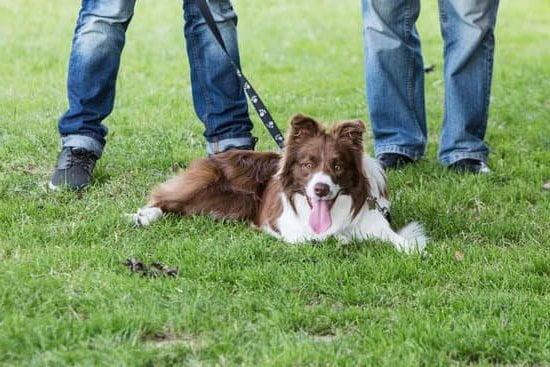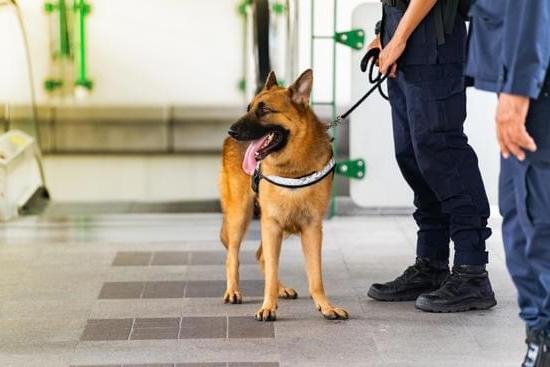Crate training is an effective way to provide discipline, security, and a safe space for your dog. By teaching your furry friend how to behave inside a crate, you can prevent destructive behavior and promote positive habits. In this article, we will explore the ins and outs of crate training. From choosing the right crate for your dog to troubleshooting common issues, we’ll cover everything you need to know about this valuable training method.
When it comes to crate training your dog, there are several key factors to consider. The type of crate you choose plays a significant role in the success of the training process. In addition to discussing the benefits of crate training and offering a step-by-step guide, we will also delve into using positive reinforcement to ensure that your dog associates the crate with positivity.
Furthermore, we will address common mistakes to avoid in crate training and provide tips for gradually transitioning your dog out of the crate. Whether you’re new to dog ownership or looking for alternative methods to manage your pet’s behavior, this comprehensive guide will give you all the tools and insights you need for successful crate training.
Choosing the Right Crate for Your Dog
When it comes to crate training your dog, choosing the right crate is a crucial step in ensuring the success of this training method. The right crate provides a safe and comfortable space for your dog while also serving as an effective tool for behavior management. Here are some key considerations when selecting a crate for your dog.
Types of Crates
There are a few different types of crates to choose from, including wire crates, plastic crates, and soft-sided crates. Each type has its own set of benefits and drawbacks, so it’s important to consider your dog’s needs and your specific training goals before making a decision.
Proper Sizing
It’s essential to choose a crate that is the right size for your dog. The crate should be large enough for your dog to stand up, lie down, and turn around comfortably, but not so large that they have ample space to use one end as a bathroom area. Proper sizing will help create a sense of security and encourage positive associations with the crate.
Additional Features
Consider any additional features that may benefit your specific situation, such as divider panels for adjustable sizing (particularly useful for puppies), easy-to-clean trays, or portability for travel purposes.
By considering these factors when choosing a crate for your dog, you can set them up for success in their crate training journey. A well-suited crate will make the process smoother and more comfortable for both you and your furry friend throughout their training experience.
The Benefits of Crate Training
Crate training a dog comes with a multitude of benefits for both the pet and the owner. When done correctly, this form of training can provide a safe and secure space for your furry friend while also aiding in their behavior and overall well-being.
Some of the key benefits of crate training include:
- Providing a den-like environment for your dog to retreat to when they need some downtime or want to feel safe and secure
- Assisting in potty training by teaching your dog to hold their bladder and bowel movements while in the crate
- Helping to prevent destructive behaviors such as chewing on furniture or belongings when you’re not around
- Serving as a safe way to transport your dog in the car or on trips
- Giving your dog a sense of routine and structure, which can lead to reduced anxiety and stress
Furthermore, crate training can be especially beneficial for puppies who are still learning the ropes. It helps them adapt to being alone, reduces separation anxiety, and establishes boundaries within the household.
Ultimately, the benefits of crate training depend on how it is implemented. It’s important to take things slow, use positive reinforcement, and make the crate a comfortable and inviting space for your dog. With patience and consistency, you will soon see the many advantages that come with crate training.
Step-by-Step Guide to Crate Training
Introducing Your Dog to the Crate
When starting crate training, it’s important to make the crate a positive and inviting space for your dog. Place the crate in a common area of the house and leave the door open so your dog can explore it at their own pace. To encourage your dog to enter the crate, you can place treats or their favorite toys inside. Allow your dog to go in and out of the crate freely before moving on to the next step.
Feeding Your Dog in the Crate
Once your dog is comfortable entering the crate, start feeding them their meals inside. This will further associate the crate with positive experiences. You can also gradually close the door while they eat, opening it once they are done. As your dog becomes more comfortable with eating inside the closed crate, begin leaving them in there for short periods of time after they finish their meal.
Extending Crate Time
As your dog gets used to being in the crate with the door closed, gradually extend the time they spend inside. Start by staying nearby while they are in there, then slowly increase the distance between you and the crate. It’s important to let your dog out before they become anxious or distressed, as this can set back their progress with crate training.
Overall, following these steps and being patient with your dog will help ensure successful crate training. Remember that every dog is different and may progress at their own pace when it comes to getting used to being in a crate. consistency, praise, and rewards are key elements of effective
Common Mistakes to Avoid in Crate Training
When it comes to crate training your dog, there are common mistakes that many pet owners make that can hinder the effectiveness of the training process. By being aware of these mistakes, you can ensure that your dog’s crate training goes smoothly and successfully.
Mistakes to Avoid in Crate Training:
- Using the crate as punishment: One common mistake that pet owners make is using the crate as a form of punishment for their dog. This can create negative associations with the crate and may lead to resistance or fear of being inside it. Instead, the crate should be seen as a safe and comfortable space for your dog.
- Leaving the dog in the crate for too long: Another mistake is leaving your dog in the crate for extended periods of time. While crate training is meant to provide structure and security, leaving your dog in the crate for too long can lead to anxiety and distress. It’s important to gradually increase the amount of time your dog spends in the crate.
- Not making the crate a positive place: Some pet owners forget to make the crate an inviting and pleasant place for their dogs. Adding comfortable bedding, toys, and treats can help create positive associations with the crate.
By keeping these common mistakes in mind, you can avoid potential pitfalls in your dog’s crate training journey and set them up for success. Remember that patience, consistency, and positive reinforcement are key components in successful crate training.
Using Positive Reinforcement in Crate Training
Positive reinforcement is a crucial aspect of crate training your dog. When done correctly, positive reinforcement can help your dog view the crate as a safe and comfortable space. It involves rewarding your dog for exhibiting desirable behavior, such as entering the crate voluntarily or staying calm inside. This creates a positive association with the crate, making it more likely that your dog will willingly enter and stay inside the crate.
One effective way to use positive reinforcement in crate training is by using treats. Whenever your dog enters the crate on command or remains calm inside, give them a high-value treat as a reward. This will help them understand that good things happen when they are inside the crate. Over time, you can gradually reduce the frequency of treats as your dog becomes more comfortable with being in the crate.
In addition to treats, you can also use praise and affection as forms of positive reinforcement. Whenever your dog follows commands related to the crate or displays calm behavior inside, shower them with verbal praise and attention. Dogs thrive on positive feedback from their owners, so this method can be highly effective in creating a positive association with the crate.
| Aspect | Description |
|---|---|
| Positive Reinforcement | Crucial aspect of crate training |
| Treats | Rewarding desirable behavior with high-value treats |
| Praise and Affection | Using verbal praise and attention as forms of reinforcement |
Troubleshooting Common Issues in Crate Training
Crate training a dog can be a highly effective way to help them learn important behaviors and boundaries. However, despite the benefits, it’s not uncommon for pet owners to encounter challenges along the way. Fortunately, many common issues with crate training can be resolved with patience, consistency, and positive reinforcement.
One of the most common issues in crate training is when a dog whines or barks excessively while in the crate. This behavior can be distressing for both the dog and the owner. To address this issue, it’s essential to first ensure that the crate is comfortable and inviting for your pet.
Placing their favorite toys or blanket inside can help create a positive association with the crate. Additionally, gradually increasing the amount of time your dog spends inside the crate can help reduce their anxiety.
Another common issue is when a dog refuses to enter the crate altogether. If your dog resists entering their crate, it’s crucial not to force them as this can create negative associations with the crate. Instead, use positive reinforcement techniques such as treats and praise to encourage your pet to explore and eventually enter the crate on their own. Gradually building up this positive association will help eliminate any reluctance your dog may have towards being crated.
In some cases, dogs may exhibit destructive behavior when left alone in their crates. This could include chewing on the bars of the crate or attempting to escape. To address this issue, it’s important to make sure that your dog gets plenty of physical exercise and mental stimulation before being crated. Providing interactive toys and puzzles inside the crate can also help keep them entertained while confined.
| Common Issues in Crate Training | Troubleshooting Tips |
|---|---|
| Excessive whining or barking | Ensure comfort, gradual increase in time spent inside crate |
| Refusal to enter the crate | Use positive reinforcement with treats and praise |
| Destructive behavior inside the crate | Provide physical exercise and mental stimulation before crating, offer interactive toys/puzzles inside of the crate |
Gradually Transitioning Your Dog Out of the Crate
In conclusion, crate training is a valuable tool for helping your dog feel safe and secure while also providing you with peace of mind when it comes to managing their behavior. It is important to remember that crate training should be a gradual process, taking into consideration the individual needs and behaviors of your dog. As they become more comfortable and accustomed to their crate, you can start gradually transitioning them out of it.
One important aspect of gradually transitioning your dog out of the crate is to provide them with alternative safe spaces within the home. This could include setting up a cozy bed in a quiet corner or designated area for them to relax in. By slowly introducing them to these new spaces and rewarding positive behaviors, you can help them feel comfortable outside of the crate.
Additionally, it’s crucial to continue using positive reinforcement techniques as you transition your dog out of the crate. By offering praise, treats, and encouragement for good behavior outside of the crate, you can help reinforce their confidence and reassure them that they are still in a safe environment. With patience, consistency, and understanding of your dog’s individual needs, you can successfully transition them out of the crate while maintaining their sense of security and well-being.
Frequently Asked Questions
How Long Until a Dog Is Crate Trained?
Crate training duration can vary depending on the individual dog. Some dogs may become comfortable with the crate in a few days, while others may take weeks. Consistency and positive reinforcement are key to successful crate training.
Is Crate Training Stressful for Dogs?
Crate training itself should not be inherently stressful for dogs if done properly. It provides them with a safe and secure space of their own. However, if not approached correctly or if the crate is used punitively, it can cause stress and anxiety for the dog.
Should I Ignore My Dog Crying During Crate Training?
It can be difficult to hear your dog cry during crate training, but it’s important to resist the urge to immediately respond every time they whimper. If you know they have been fed, exercised, and don’t need to relieve themselves, it’s okay to let them self-soothe and gradually become comfortable with the crate.

Welcome to the blog! I am a professional dog trainer and have been working with dogs for many years. In this blog, I will be discussing various topics related to dog training, including tips, tricks, and advice. I hope you find this information helpful and informative. Thanks for reading!





